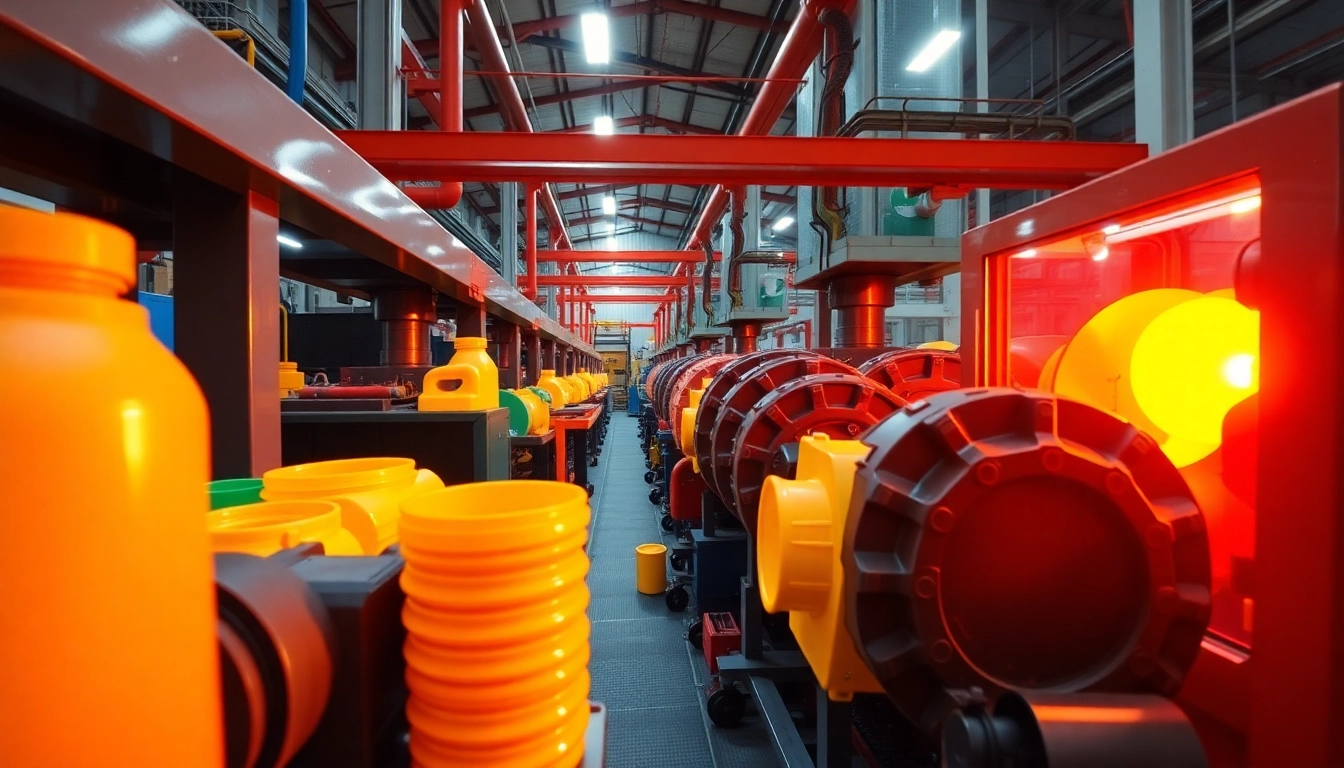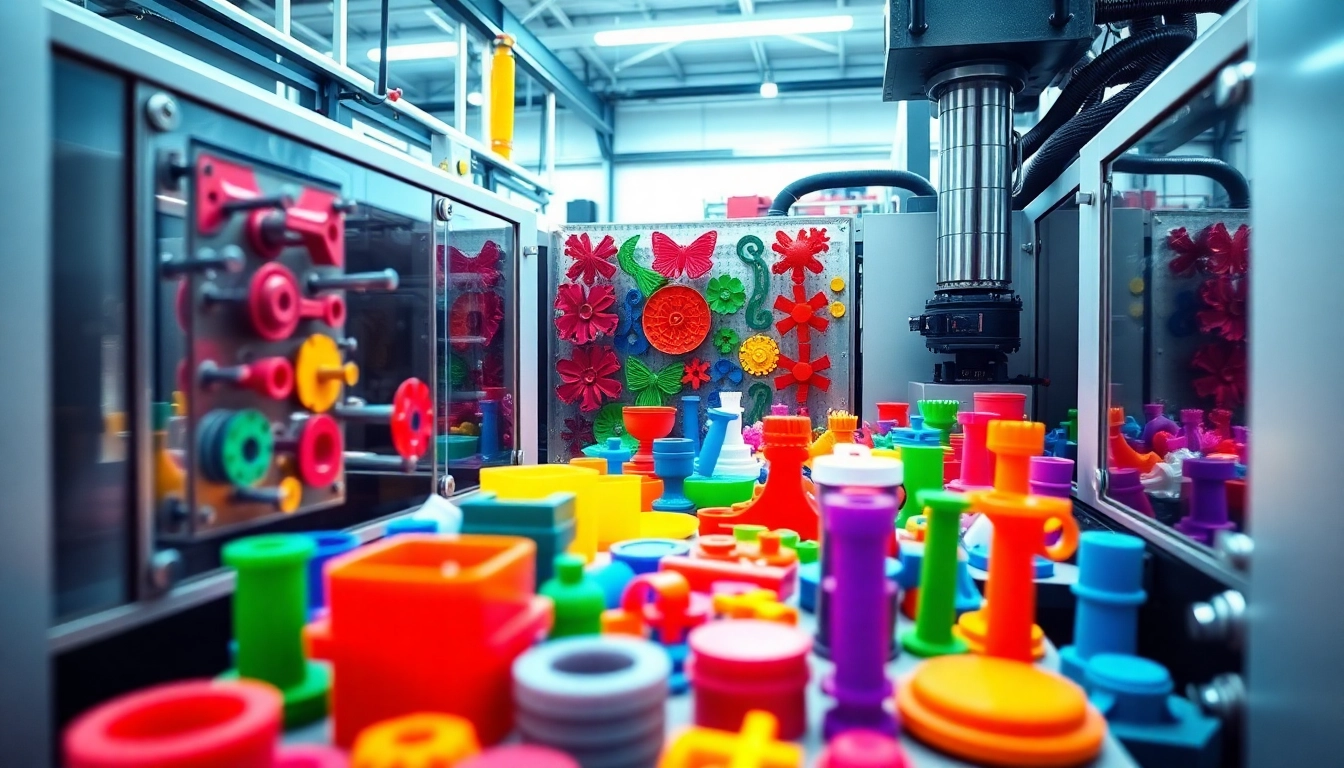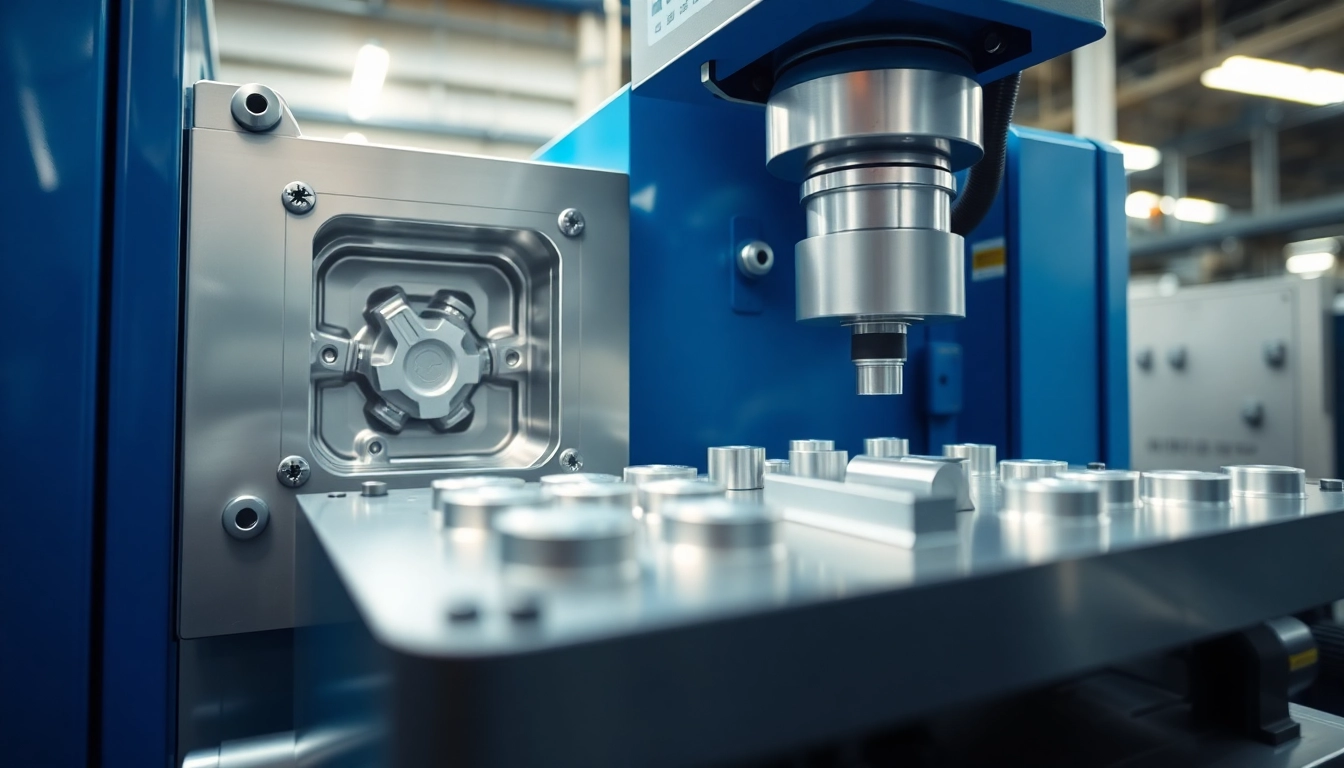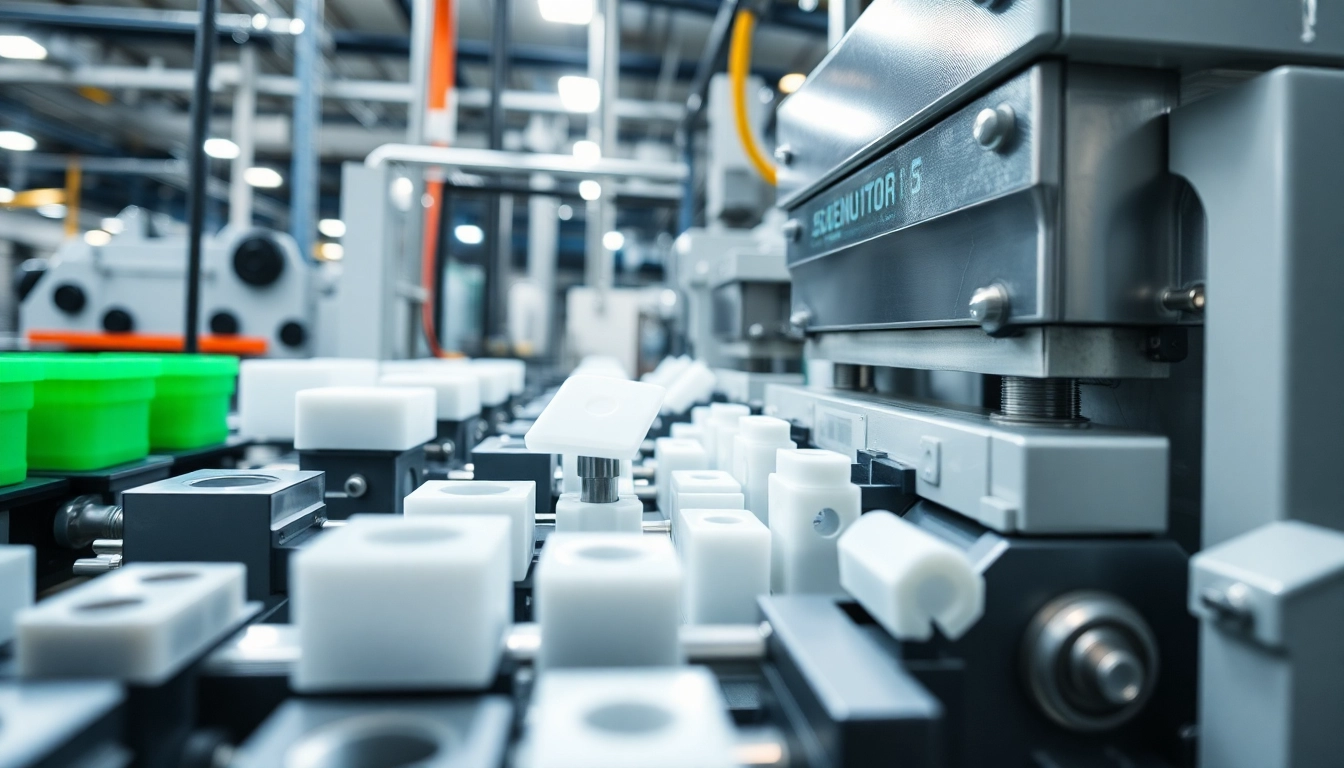Understanding Blow Moulded Plastic Parts
Blow moulded plastic parts are a prevalent solution in the manufacturing of hollow items ranging from containers to complex components in various industries. The blow moulded plastic parts production process involves injecting air into heated plastic, allowing it to expand and conform to the desired mold shape. This innovative technique streamlines production capabilities while significantly improving efficiency and reducing material waste compared to traditional manufacturing methods. Understanding the intricacies behind blow moulding not only helps manufacturers choose the right processes and materials but also identifies applications that can benefit from this flexible manufacturing approach.
What Are Blow Moulded Plastic Parts?
Blow moulded plastic parts are typically hollow structures created through the blow moulding process. This manufacturing technique is widely used for producing items like plastic bottles, containers, automotive parts, and other disposable or reusable plastic goods. The primary advantage of blow moulding lies in its ability to create hollow forms efficiently, allowing for lighter, more versatile product designs. By utilizing high-pressure air, raw plastic materials can be shaped into intricate designs that meet specific performance requirements.
Types of Blow Moulding Processes
There are three main types of blow moulding processes utilized in the manufacturing of plastic parts:
- Extrusion Blow Moulding (EBM): In this process, a heated plastic tube (called a parison) is extruded into a mould. Hot air is then blown into the parison, causing it to expand and take the shape of the mould. EBM is commonly used for producing large items like drums and bottles.
- Injection Blow Moulding (IBM): Here, a solid plastic preform is first injection-moulded and then placed into a blow mould. Compressed air is subsequently introduced to shape the preform into a hollow part. This method provides high precision and is ideal for smaller, more intricate items.
- Injection Stretch Blow Moulding (ISBM): This variant focuses on producing containers that require superior clarity and strength, such as PET bottles. The process involves stretching the preform while inflating it to improve the material properties and provide better aesthetics.
Benefits of Blow Moulded Plastic Parts
The blow moulding process offers several advantages that contribute to its popularity in the manufacturing sector:
- Efficiency: Blow moulding allows for rapid production rates, reducing cycle times and increasing output. This makes it an attractive option for high-demand industries.
- Cost-Effectiveness: The reduction of material waste and faster production times leads to lower overall costs for manufacturers. Additionally, the ability to produce lightweight items can lower transportation costs.
- Versatility: Blow moulding can produce a wide variety of shapes and sizes, accommodating complex designs that meet diverse applications across multiple industries.
- Material Utilization: Materials can be tailored for specific needs, such as recyclability or chemical resistance, further enhancing product performance.
Key Materials Used in Blow Moulding
Common Resins for Blow Moulded Plastic Parts
The choice of material plays a crucial role in the blow moulding process, as different plastics offer unique properties suited to specific applications. Commonly used resins include:
- Polyethylene (PE): Available in multiple variants (HDPE, LDPE, LLDPE), polyethylene is known for its flexibility, chemical resistance, and cost-effectiveness.
- Polypropylene (PP): This thermoplastic provides excellent fatigue resistance and low-density features, making it ideal for packaging and automotive parts.
- Polyethylene Terephthalate (PET): A highly translucent plastic often used for food and beverage containers, PET offers excellent strength and recyclability.
- Polyvinyl Chloride (PVC): Known for its durability, PVC is commonly used in the construction industry and for creating rigid components.
Characteristics of Each Material
Each resin comes with its distinct characteristics, influencing the final quality and suitability of the blow moulded products:
- Polyethylene: Exhibits excellent impact resistance and can be produced in both rigid and flexible forms, facilitating various applications from heavy-duty storage containers to soft bottles.
- Polypropylene: Features a higher melting point, which makes it suitable for items subjected to elevated temperatures. It is also resistant to moisture and certain chemicals.
- Polyethylene Terephthalate: Its strong molecular structure provides enhanced dimensional stability and impact resistance, crucial for beverage and food packaging.
- Polyvinyl Chloride: Rigid variants of PVC retain shape under stress and are ideal for parts requiring durability and mechanical strength.
Choosing the Right Material for Your Project
Selecting the appropriate material for blow moulding necessitates a comprehensive understanding of the specific requirements and conditions the end product will face. Considerations involve:
- Application Requirements: Determine the intended use, including exposure to chemicals or temperature extremes.
- Cost Constraints: Evaluate the overall budget for the project to select a material that meets performance criteria at a manageable cost.
- Regulatory Compliance: Ensure the chosen resin complies with industry standards regarding safety and environmental regulations.
Applications of Blow Moulded Plastic Parts in Various Industries
Consumer Product Manufacturing
The consumer goods sector extensively utilizes blow moulded plastic parts for products like beverage bottles, kitchen containers, and toys. The quick turnaround and customization options allow brands to meet consumer demands efficiently while navigating market trends. For example, many beverage companies opt for PET bottles due to their light weight and high clarity.
Automotive Industry Applications
In the automotive realm, blow moulded components are prevalent for manufacturing dashboards, air intake ducts, and gas tanks. These parts often leverage materials like polypropylene for their strength and light weight, which aids in improving fuel efficiency. The scalability of the blow moulding process allows automotive manufacturers to produce components rapidly as demand fluctuates.
Packaging Solutions
Blow moulding is instrumental in creating diverse packaging solutions, ranging from large containers for industrial products to small bottles for personal care items. The ability to produce lightweight, resilient packaging not only reduces shipping costs but also enhances product safety during transport. Moreover, many brands are now focusing on using recyclable materials to meet sustainability goals.
Challenges in Producing Blow Moulded Plastic Parts
Common Manufacturing Issues
Despite its advantages, the blow moulding process can encounter several challenges, such as:
- Material Wastage: Improper setup or defective moulds can lead to excess material being discarded, impacting both costs and environmental initiatives.
- Dimensional Accuracy: Maintaining precision in part dimensions can be difficult, particularly in high-volume production, leading to inconsistencies between batches.
- Surface Defects: Issues such as splay and flow lines can affect the appearance and functionality of the final product.
Quality Control Best Practices
To mitigate manufacturing challenges, implementing stringent quality control protocols is crucial. Best practices include:
- Regular Equipment Maintenance: Scheduled inspections and updates can ensure that all machinery operates efficiently and avoids unexpected breakdowns.
- Material Testing: Conduct tests on raw materials prior to production to ensure they meet specifications and standards required for the project.
- Real-Time Monitoring: Utilize technology to monitor production processes continually, enabling immediate adjustments to maintain quality.
Cost Considerations in Blow Moulding
While blow moulding is generally cost-effective, it is crucial to consider initial setup costs associated with mould design, machine procurement, and resin selection. Balancing production efficiency with material costs will lead to a mutually beneficial approach that affords the ability to meet both consumer expectations and profit margins.
Future Trends in Blow Moulding Technology
Advancements in Material Science
The future of blow moulding is greatly influenced by advancements in material science, particularly the development of bio-based and high-performance plastics. These materials offer unique properties that expand the application possibilities and enhance the sustainability of products. Manufacturers are continually seeking resins that minimize environmental impact while maximizing product durability.
Automation in Blow Moulded Plastic Production
Automation is rapidly evolving the blow moulding landscape, with the integration of robotics enhancing productivity and precision. Automated systems reduce human error and limit downtime, providing manufacturers a competitive edge in a demanding market. Ultimately, automation is expected to lower production costs while increasing output consistency.
Environmental Considerations and Sustainability
Sustainability has become a crucial factor in the plastic manufacturing industry. Companies are increasingly focusing on producing recyclable blow moulded parts and minimizing their carbon footprint. Strategies include using recycled materials, improving energy efficiency in production systems, and investing in technologies that reduce waste and streamline resource allocation.



